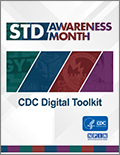Know the Facts - #GYT

False assumptions about STDs – how they’re spread, prevented, and treated – are everywhere, and it can be especially hard for people to get the facts. Making sure that you have the correct information about STD prevention and testing has never been more important.
STD Prevention Partners: You can tailor the content on this page for the young people or organizations that serve young people in your community.
Do you know…?
- STDs impact young people the hardest. In the U.S., half of all new STDs are in people under 25 years old.
- If you are sexually active, you can lower your risk of getting an STD by using a latex condom the right way from start to finish every time you have sex.
- Almost all STDs that can be spread via condomless vaginal sex can also be spread through oral and anal sex without a condom.
- You can’t tell if someone has an STD just by looking at them. Many STDs don’t cause any symptoms, so the only way to know for sure is to get tested.
- Even if you use birth control, you should still think about STD prevention. Birth control methods like the pill, patch, ring, and IUD are very effective at preventing pregnancy, but they do not protect against STDs and HIV.
- The most reliable way to avoid STDs is to not have vaginal, anal, or oral sex.
You should also know that all STDs, even HIV, are treatable, and most are curable. The sooner you get tested, the sooner you can take action to protect your health and the health of your partner(s).
Some STDs can lead to serious health problems if they’re not treated. For example, an untreated STD, like chlamydia, can make it difficult or impossible for a woman to get pregnant. And having herpes or gonorrhea can increase your chances of getting HIV.
- STD tests are quick, simple, and usually painless. For example, rapid HIV tests can provide results from just a swab inside the mouth in only 20 minutes.
- Not all medical checkups include STD testing. Unless you ask to be tested, you can’t assume you have been. Ask your medical provider which STDs you should be tested for.
- Talk to your partner about when you were last tested and suggest getting tested together. And if you have an STD, tell your partner. These conversations may seem hard to have, but open communication with your partner is essential to staying healthy and stopping the spread of STDs. These conversations may also bring you closer together. Here are some tips to help you start the conversationexternal icon.
- You can find confidential testing near you that is free or low cost by going to www.gettested.cdc.gov.
